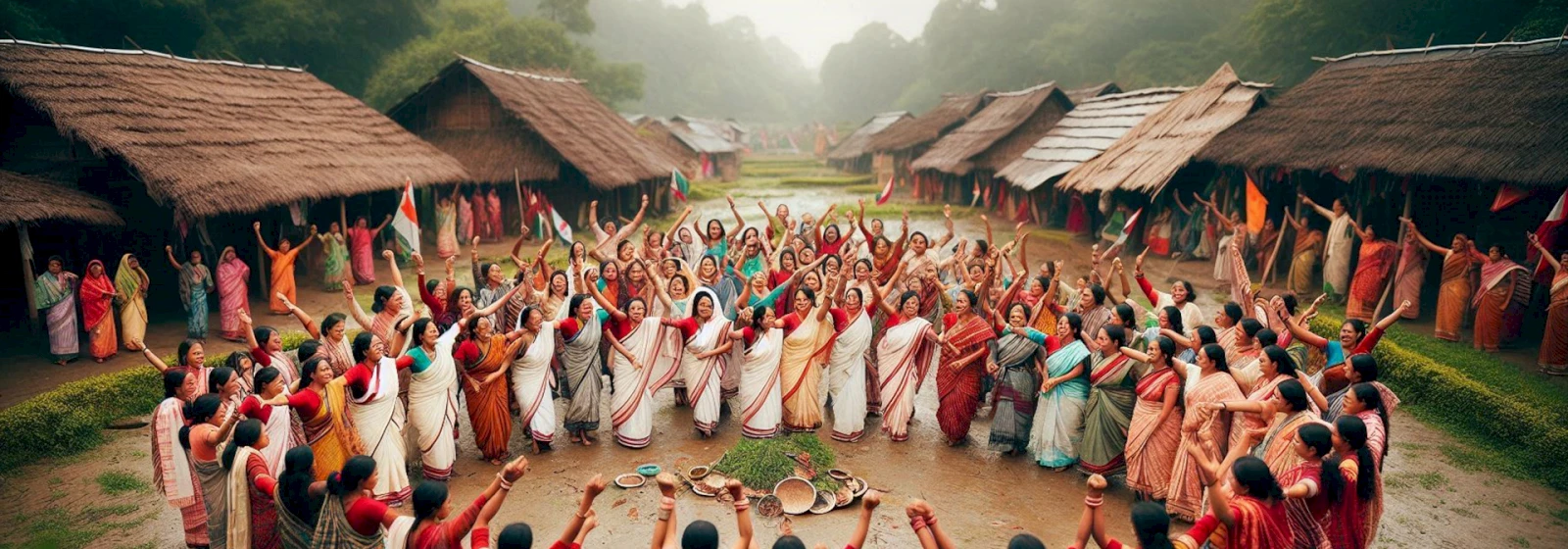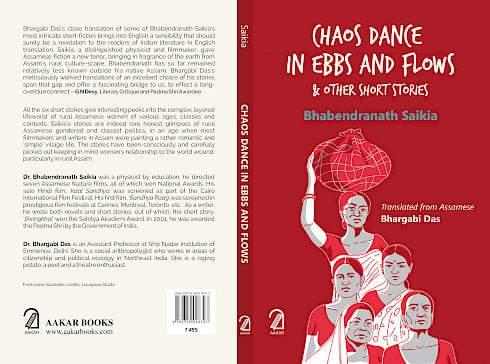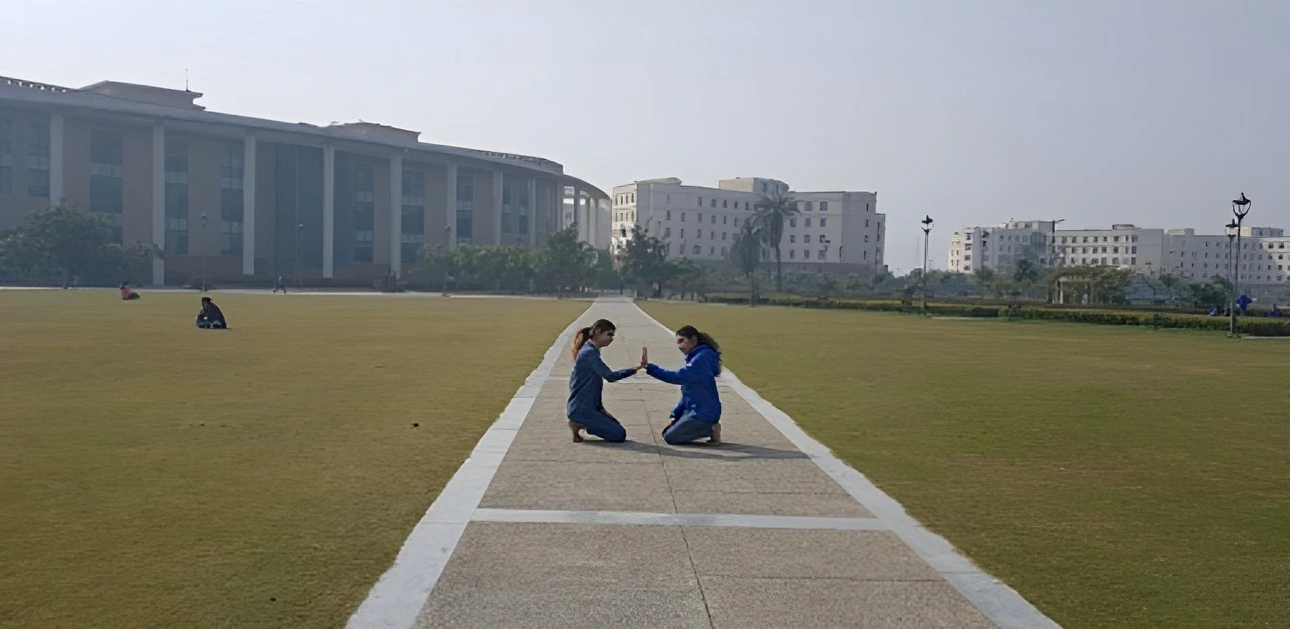Translating an honest glimpse of Assam

Editorial / November 20, 2024
No story lives unless someone wants to listen, and the majority of those who want to are not part of a monoculture, but citizens of a diverse world. Literature is knowledge, and knowledge should not be limited to a single audience. How else can this barrier be bridged if not through translation?
Dr. Bhargabi Das, Assistant Professor, Department of Rural Management, has worked on this principle to deliver a lucid translation in her book, Chaos Dance in Ebbs and Flows and Other Short Stories. The book comprising six short stories written in Assamese by Dr. Bhabendra Nath Saikia has been consciously and carefully picked out to give interesting peeks into the complex, layered lifeworld of rural Assamese women of various ages, classes and contexts – their dreams, desires, hopes, sorrows, anger and apathy.
Saikia’s stories are indeed rare, honest glimpses of rural Assamese gendered, casteist and classist politics in an age when most filmmakers and writers in Assam were painting the image of a rather romantic and ‘simple’ village life without introducing any disruptions.
Unfortunately, as someone who is little known outside his home turf Assam, Saikia does need an introduction – and it demands to see how much justice one can do to that because Saikia was a man who wore many hats and excelled in each.
Dr. Bhabendra Nath Saikia was a prolific person. A physicist by education, he directed seven Assamese feature films, all of which won National Awards. His sole Hindi film, ‘Kaal Sandhya’ was screened as part of the Cairo International Film Festival. His first film, ‘Sandhya Raag’ was screened in prestigious film festivals at Cannes, Montreal, Toronto, etc.
As a writer, he wrote both novels and short stories, out of which, the short story, ‘Shringkhol’ [Chaos Dance in Ebbs and Flows in the translated book] won the Sahitya Akademi Award. In 2001, he was awarded the Padma Shri by the Government of India. He was also the founding editor of magazines such as ‘Safura’, a children’s magazine and ‘Prantik’, a fortnightly Assamese magazine.

And at first it was through them that Dr. Bhargabi was introduced to Saikia’s words and worlds. “My memories of reading Hekh Pristha (The Last page), a collection of diary entries by Saikia that was republished in ‘Prantik’ still warms my heart. Since the entries would arrive every 15 days, I remember desperately waiting for the next issue of the magazine while diligently reading the entry from the last issue as a matter of revision. Hekh Pristha introduced me to a different reading cycle and realm. That reading something need not be hurried—it need not be gorged all at once but slowly, one piece at a time. That waiting to read is an integral part of reading itself. That can allow the author’s stories to be pushed in many directions, weaving imaginations that are well beyond the intentions of the author. And hence, waiting to read can be much more fun and desirable than the act of reading itself,” says Dr. Bhargabi.
As a native of Assam who had grown up witnessing and experiencing the Assamese socio-cultural and political world very closely, Bhargabi was struck by Saikia’s evocative and detailed images that his writings painted in her mind that allowed her to get absorbed in his world. His works presented to her a simple yet layered narrative, one that is very close to Assam’s everyday reality and characters. The stories do not scream morals in one’s face and yet the reality that is presented is both relatable and shocking, leaving its traces for a long time to come in one’s memory.
“One of the greatest joys of translating the stories to English was that it took me back to those memories and allowed me to relive and re-immerse myself in Saikia’s beautifully nuanced worlds. Since Saikia presents such complex, layered worlds in simple words, the challenge was to map out those complex worlds without complicating them. There is an earthy essence to Saikia’s writings that makes them his own – the challenge was to both understand that well and then capture it accurately in the translations,” says Dr. Bhargabi.
Saikia’s stories do not try chasing big events but look at the ‘eventedness of the everyday’. His intention is to catch the rhythms and beats of the daily flow of ordinary people—people whose existence we know, we have seen or maybe have heard of. Whose daily struggles, dreams and failures smell of either nostalgia or familiarity of some kind. And he describes this everyday nothingness, this everyday familiarity from closer worlds with utmost integrity and poignant detail. And it is through this he weaves magic.
These stories in translation are intended for anyone who wants to experience that magic. It is to experience a world that non-Assamese readers might not be too aware of but reading which might make them see the commonalities of human existence. Doing this might also then help the mainstream Indian audience demystify the geographical block that is conveniently blocked as ‘the north-east’. Saikia’s stories can, in fact, open up new ways of seeing rural Assam and understanding Assamese society, its politics and relations both for people within and outside of North-east India.
More Blogs

The Hawthornden Literary Retreat bestowed on Dr Sambudha Sen to complete the manuscript of a novel
Professor Sambudha Sen, Head of the Department of English at Shiv Nadar Institution of Eminence, Delhi-NCR, was awarded a residency at the...

The Power of the Moving Body
Movement is an innate bodily action that humans have been exhibiting for the longest time. Long before language was invented, the body was the...

How Does A Multi-Disciplinary Approach To Education Enhance Learning And Prepare Students For A Multi-Faceted World?
In today’s world, where businesses are changing almost every day, it is the responsibility of educational institutes to provide holistic...